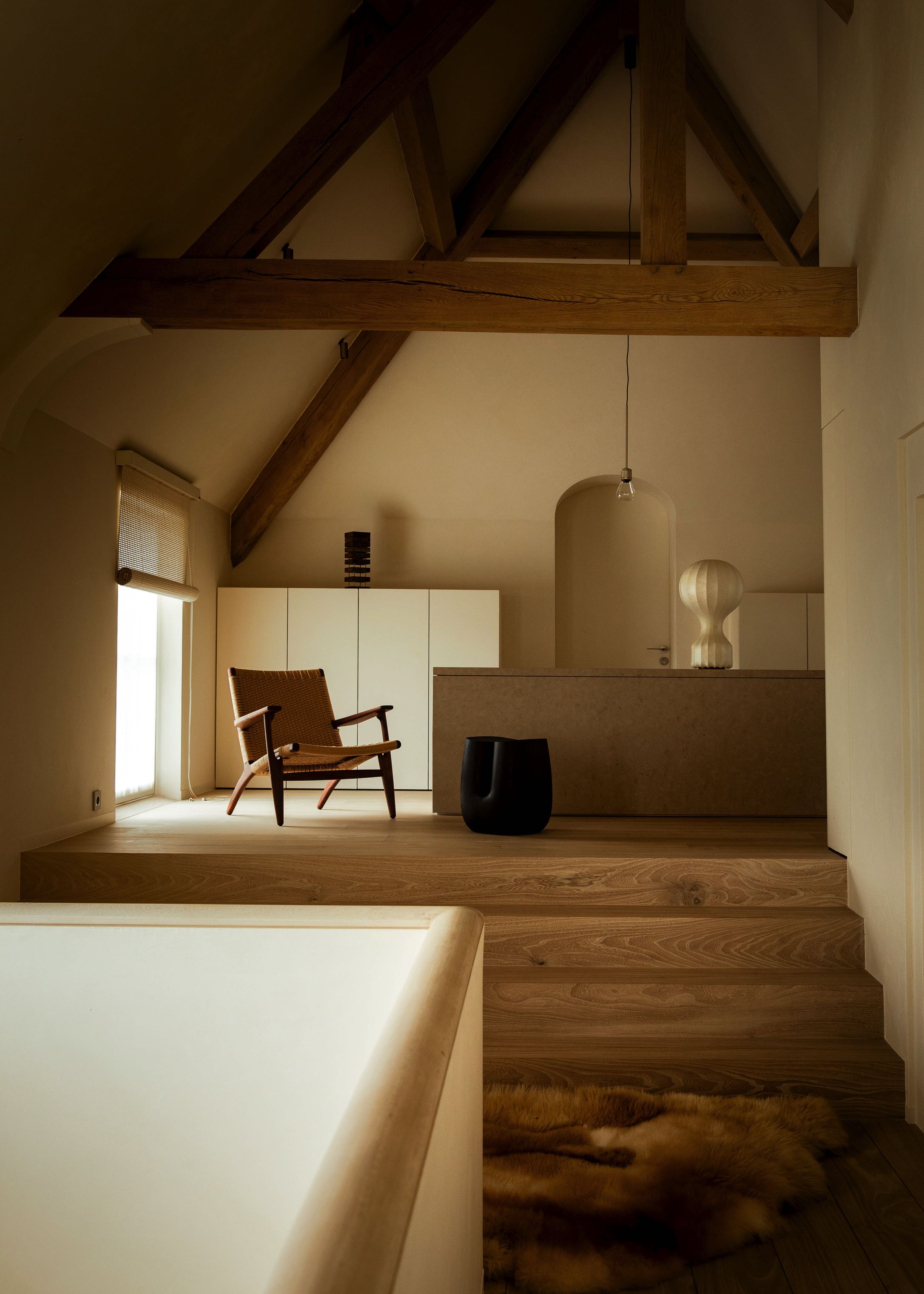A parquet floor from Woodstoxx: timeless quality and pure craftsmanship
Woodstoxx manufactures, sells and fits parquet floors in a range of designs, each with their own unique advantages. Thanks to our in-depth expertise and careful approach, we create flooring solutions that seamlessly meet both the functional and the aesthetic requirements of every project.
We provide expert guidance through each step of your project, from initial consultation to high-quality finishing.

Multilayer parquet

Veneer flooring
Veneer parquet combines the warm look of real wood with the ease of use of laminate. Easy to fit and maintain, it has a top layer of real wood instead of an imitation print. Each board is unique, with a thin layer of wood veneer on a solid middle layer.
This floor is ideal for underfloor heating thanks to its good thermal conductivity and crack-resistant structure. With a top layer thinner than 2.5 mm, veneer differs from multilayer parquet. Multiple coats of varnish make the floor scratch-resistant and durable, so you can enjoy it for years to come.

Solid parquet

Vinyl parquet

Laminate parquet

Stair lining
About parquet
Parquet has long been valued for its timeless beauty and natural charm. Whether in a classic herringbone pattern or modern wide planks, it brings warmth, character, and quality to any interior. In this FAQ, we answer the most frequently asked questions.
- An authentic floor
- Ease of maintenance
- An environmental choice
- A long-lasting floor
- A floor to match your taste
The name gives it away: this pattern was designed for the Palace of Versailles when it was built. Today this unusual design is increasingly finding its way into contemporary homes. The pattern consists of diagonal weaves with a square border. A characteristic of Versailles parquet is that the square blocks are often placed at a 45-degree angle in the room. Solid European oak is used for Versailles.





